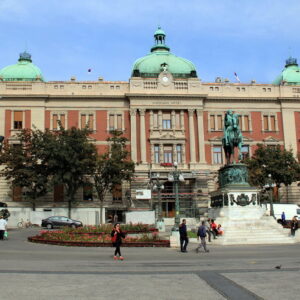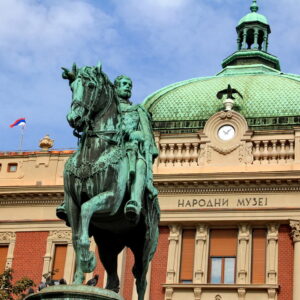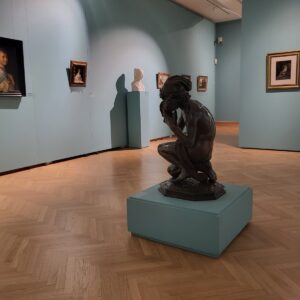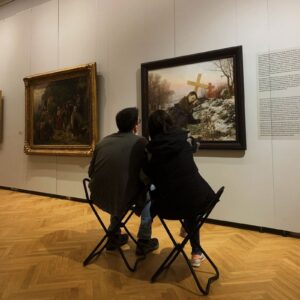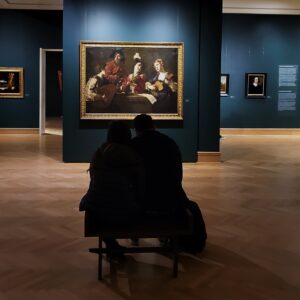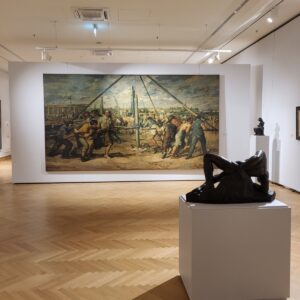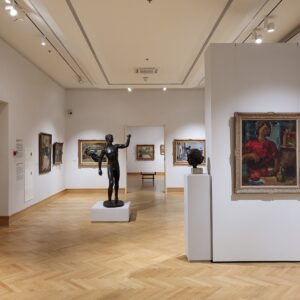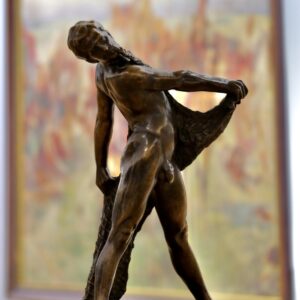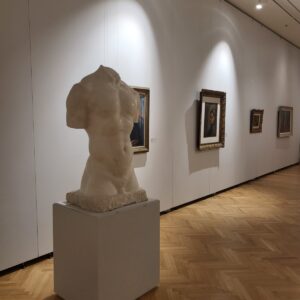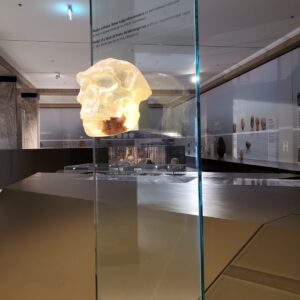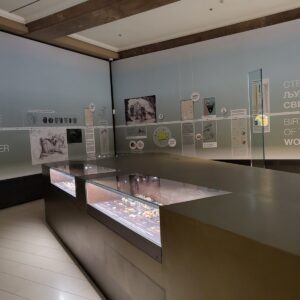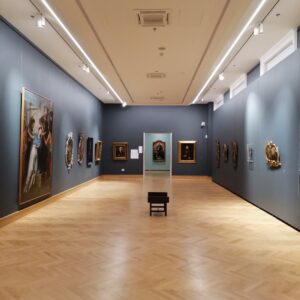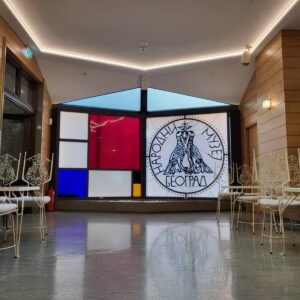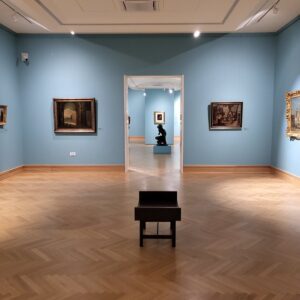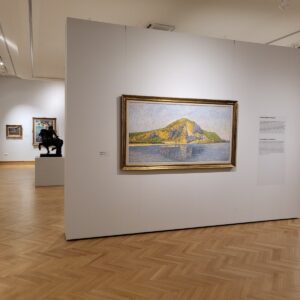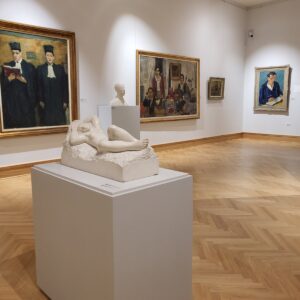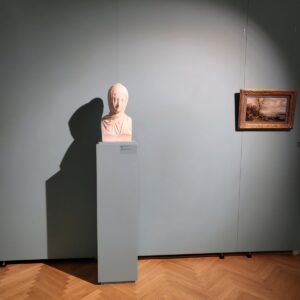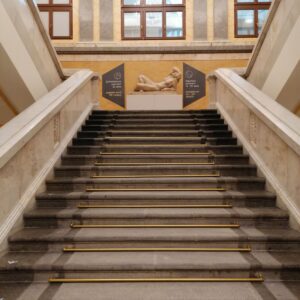The building that houses the National Museum of Serbia is located in the centre of Belgrade, on the main city square, the Republic Square (Trg Republike). It was built in 1903, to be used for the Fund Administration, and it was designed by the architects Andre Stevanović and Nikola Nestorović.
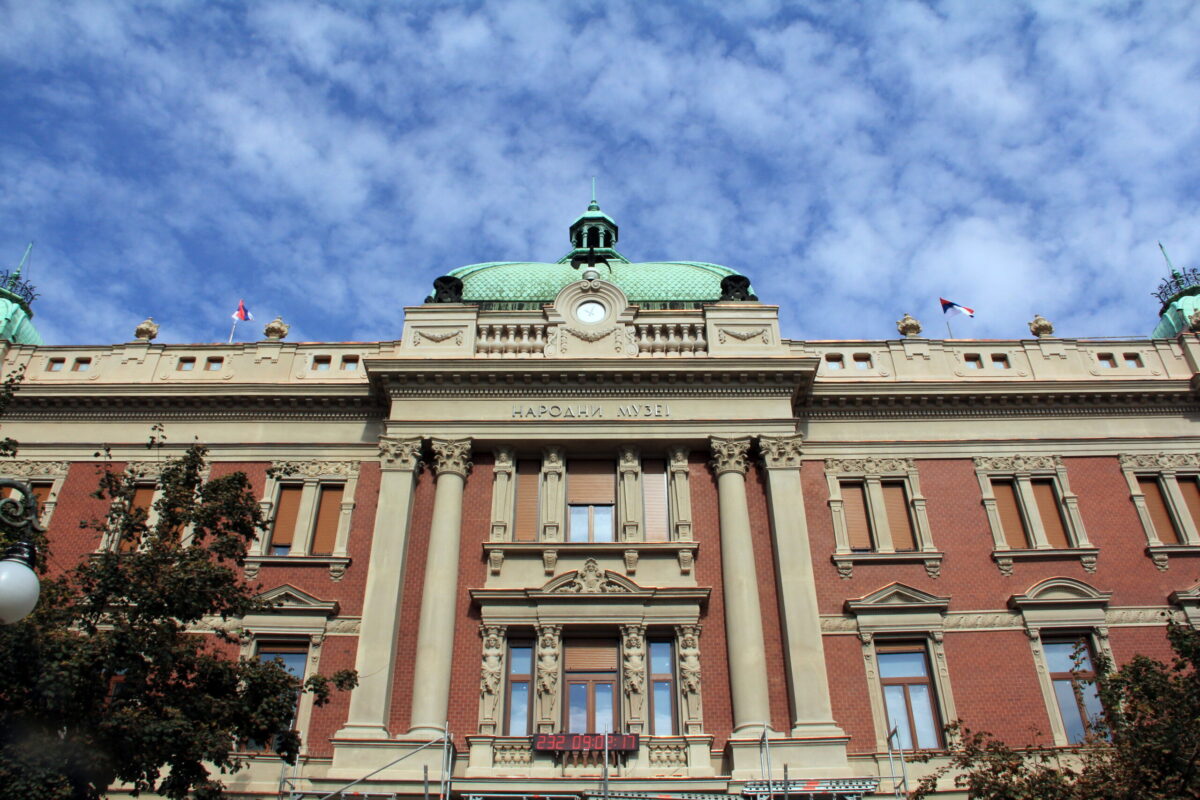
The building is a quintessential example of monumental public palaces from the late 19th and early 20th century. It was conceived in the spirit of academic eclecticism with the dominance of Neo-Renaissance elements. The façade decorations and the building interior were made by Franja Waldman.
This new monumental building erected on the site of the famous Dardanelli cafe was supposed to represent the modernity and progress of the banking concept and the security of the banking system in Serbia. The two-storey building had a central hall with a three-legged staircase. On the ground floor, on the right side, there was a counter hall for bank clients, while offices occupied the left wing of the building and its upper floors. The counter hall was decorated with slender iron pillars with decorative chapiters, which ornamental beams resting on them.
Thirty years later, the building had to be expanded and reconstructed, so in 1929, the Hipotekarna Bank bought the land next to the newly built Lazar Paču Street. This time around, architect Vojin Petrović was the chief designer who reflected the architectural work of Nestorović and Stevanović in his design. The building occupied the entire block between Vasina Street, Republic Square, Čika Ljubina and Lazar Paču streets.
At that time, a new ceremonial staircase was added to the interior, and on the right side, a new counter hall, which today serves as the Atrium of the National Museum of Serbia and features a glass roof.
During the Second World War, the building suffered significant damage in the bombing, and after the war, it was rebuilt, but without the central dome. The building was functional again, but it served banking purposes only shortly after that. In late 1950, a decision was made to cede the building to the National Museum, which has moved eleven times since its founding in 1844. The official opening of the Museum took place on May 23, 1952.
In the 1960s, thanks to the effort of the museum manager, Dr Lazar Trifunović, and with the view of adapting the building to the new purpose, extensive conservation and restoration works were performed and the building was restored to its original appearance, featuring its original dome. The interior was adapted for the needs of the National Museum, but the Museum’s needs were only partially met. During the reconstruction works carried out above the counter hall (today’s Atrium), a Great Gallery was added as space for thematic exhibitions.
At that time, a new ceremonial staircase was added to the interior, and on the right side, a new counter hall, which today serves as the Atrium of the National Museum of Serbia and features a glass roof.
The reconstruction was carried out in line with the drawings made by architects Aleksandar Deroko, Petar Anagnosti and Zoran Petrović.
The building’s façade, facing the Republic Square, again features the magnificent central dome and the statue of the eagle in front of it, made by the sculptor Risto Stijović. The same artist painted bronze portraits of the most important people in the Museum’s history – Jovan Sterija Popović and Mihailo Valtrović. The reconstructed National Museum was inaugurated on July 5, 1966.
Over the next few decades, the Museum grew and lived in this building, but due to the lack of continuous investments in the maintenance of its building, which inevitably led to decay, it lagged behind the Museum’s developments, hence it ran out of space for storing and exhibiting artefacts. Soon, a decision was made to close the Museum’s permanent exhibition to visitors.
The building’s façade, facing the Republic Square, again features the magnificent central dome and the statue of the eagle in front of it, made by the sculptor Risto Stijović.
After several attempts to renovate the building, the complete renovation, adaptation and restoration of the National Museum’s building, which now also has the latest security systems, was carried out during the period between 2016 and 2018. The National Museum was officially opened on June 28, 2018, and since then it has been creating various programmes for visitors of different ages and interests on a daily basis.
Source: National Museum of Serbia
